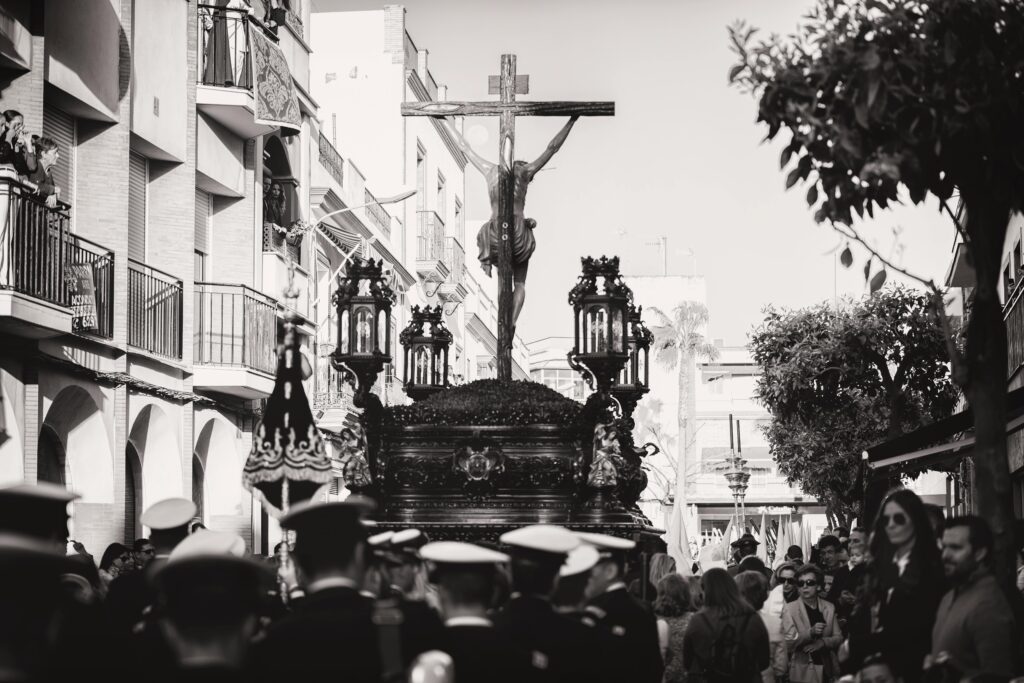Heschel Centre for Catholic-Jewish Relations at the Catholic University of Lublin
01 December, 2024
4 min
Luke’s Gospel Promotes Not The End Of The World, But The Growth Of The Way
How vigilance and divine justice in the Gospels call us to act in the face of suffering and destruction in today's world

Luke’s Gospel and the companion volume Acts promote not the end of the world, but the growth of the Way. Therefore, followers of Jesus are to be, as Jesus says, “vigilant always”, stresses Amy-Jill Levine, University Professor of New Testament and Jewish Studies Emerita and Mary Jane Werthan Professor of Jewish Studies Emerita at Vanderbilt University, in her commentary for the Catholic University of Lublin Heschel Center for the Sunday, December 1.
The sad thing is that what will be already had been and is now. We have seen in the past and see today multiple “nations in disarray.” We see today the roaring of the sea and the waves in the hurricanes, typhoons, and floods coming with increasing frequency and doing increasing damage. We see people dying not only of fright, but of bombs and gunfire, of heart disease and cancer. In the midst of suffering – ecological, military, bodily – what do we do? Jesus’s call is that we don’t turn from responsibilities to carousing and drunkenness; this is good advice. On that my mother would also agree. But simply telling us what not to do is insufficient.
The good news here is that Jesus provides instruction on what we should be doing: Here are five suggestions of many:
- Luke’s Gospel and the companion volume Acts promote not the end of the world, but the growth of the Way. Therefore, followers of Jesus are to be, as Jesus says, “vigilant always.” That means finding places to help the planet and its people. When we see destruction we do not run from the damage, we run toward the people who are hurt.
- We have a lot of apocalyptic literature in antiquity, both in the canon (including the last several chapters of the Book of Daniel and the entire Book of Revelation) and in non-canonical texts such as 1 and 2 Enoch, 2 Baruch, and 4 Ezra. People then knew that the books were not to be taken literally. They are designed, rather, like parables, in that they help us imagine a different world. a) If we can imagine destruction and death, and then imagine ourselves on the other side, we are better prepared when the storm, the attack, or the disease strikes. b) We are better prepared, because we know that death is not the end of the story.
- Apocalyptic texts help us to picture G-d arriving to bring justice to an unjust world. G-d makes very clear that vengeance is the propriety of heaven, not of human begins. We do not have to imagine ourselves taking up arms in order to wreck vengeance on our enemies.
- Fourth, today’s reading of Jeremiah 33.14-16 offers a less devastating, but just as important image of divine justice. Jeremiah assures us that the promises G-d made to the “house of Israel and Judah” – that is, to the Jewish people — will be fulfilled. a) Judah, later called Judea, and after the year 135 CE called by the Romans Syria-Palaestina, shall be safe, and Jerusalem shall be known for justice. b) Prophecy and apocalyptic literature both help us picture possibilities: i) Jeremiah offers the possibility of peace between Israel and the Palestinians. ii) Perhaps we human beings, seeing all the warning signs, can start being more vigilant, less in terms of watching for drones or snipers, missiles or bombs, and more in terms of working for the peace Judaism, Christianity, and Islam all seek.
- Finally, with all this talk of heavenly portents, we can also remember that the major sign of Advent is not the shaking of the heavens, but a baby wrapped in bands of cloth and lying in a manger. a) And so we can choose what sign speaks to us b) And we can choose what to do when we see it.
About the author:
Amy-Jill Levine is University Professor of New Testament and Jewish Studies Emerita and Mary Jane Werthan Professor of Jewish Studies Emerita at Vanderbilt University. She is also Rabbi Stanley M. Kessler Distinguished Professor of New Testament and Jewish Studies, Hartford International University for Religion and Peace. In the spring of 2019, she became the first Jew to teach a course on the New Testament at the Pontifical Biblical Institute in Rome; in 2021, she was elected a member of the American Academy of Arts and Sciences.
Related

Dying to Self, Being Born to Love
Luis Herrera Campo
09 April, 2025
2 min

Easter or Nothing: The Heart of the Christian Faith
Luis Herrera Campo
08 April, 2025
2 min

Why are long-lasting couples happy?
Exaudi Staff
08 April, 2025
3 min

The Tradition of Holy Week Processions: A Link between Faith, Community, and Culture
Exaudi Staff
07 April, 2025
3 min
 (EN)
(EN)
 (ES)
(ES)
 (IT)
(IT)

